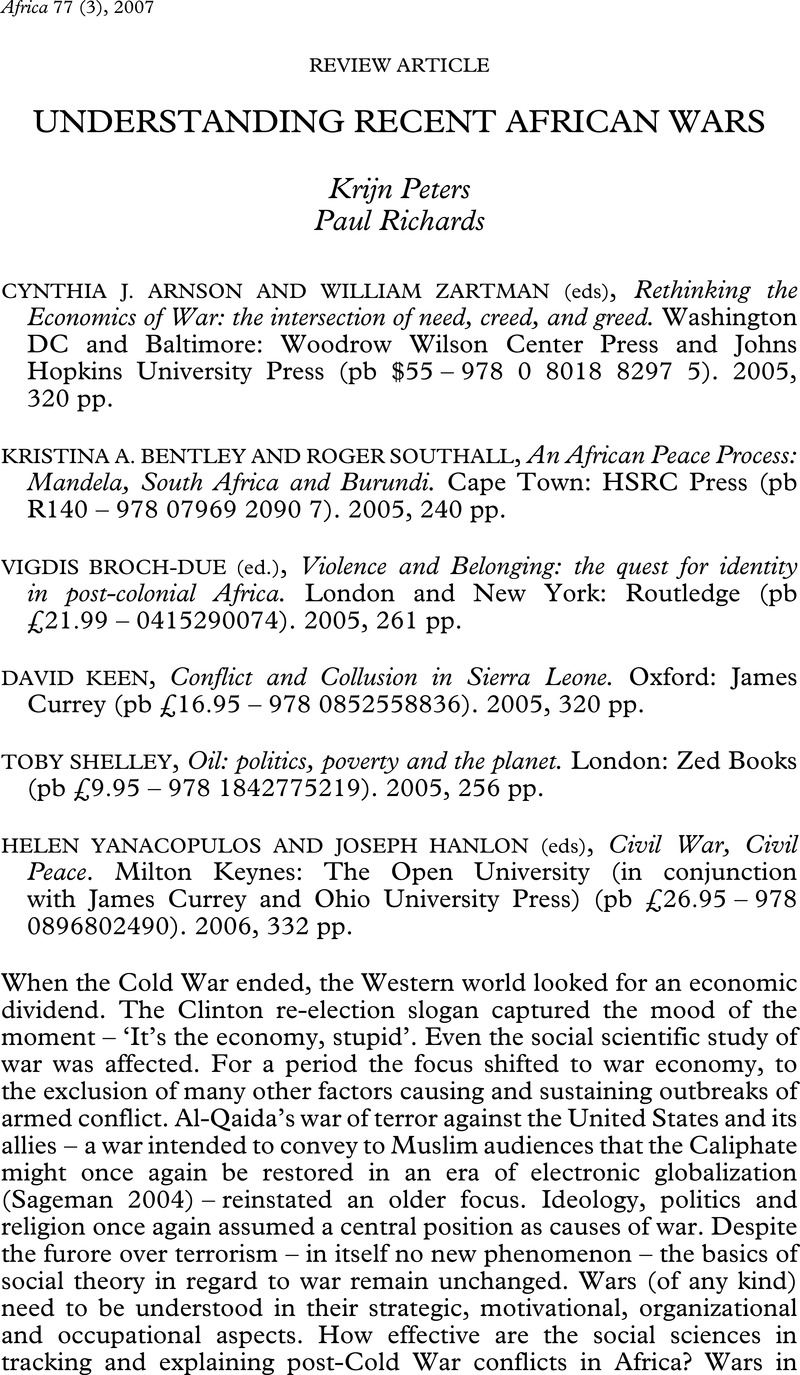Crossref Citations
This article has been cited by the following publications. This list is generated based on data provided by Crossref.
McGovern, Mike
2011.
WRITING ABOUT CONFLICT IN AFRICA: STAKES AND STRATEGIES.
Africa,
Vol. 81,
Issue. 2,
p.
314.
Millar, Gearoid
2012.
‘Our brothers who went to the bush’: Post-identity conflict and the experience of reconciliation in Sierra Leone.
Journal of Peace Research,
Vol. 49,
Issue. 5,
p.
717.
2012.
Sociétés en guerres.
p.
269.
Millar, Gearoid
2020.
Hidden Interactions in the Economics of Peace and Conflict.
Economic Anthropology,
Vol. 7,
Issue. 1,
p.
150.
Silva, Igor Castellano da
2022.
O Modo Africano de Fazer a Guerra: A Guerra Proxy Irregular Regionalizada.
Dados,
Vol. 65,
Issue. 3,





